Classroom Management Strategies for Art Teachers
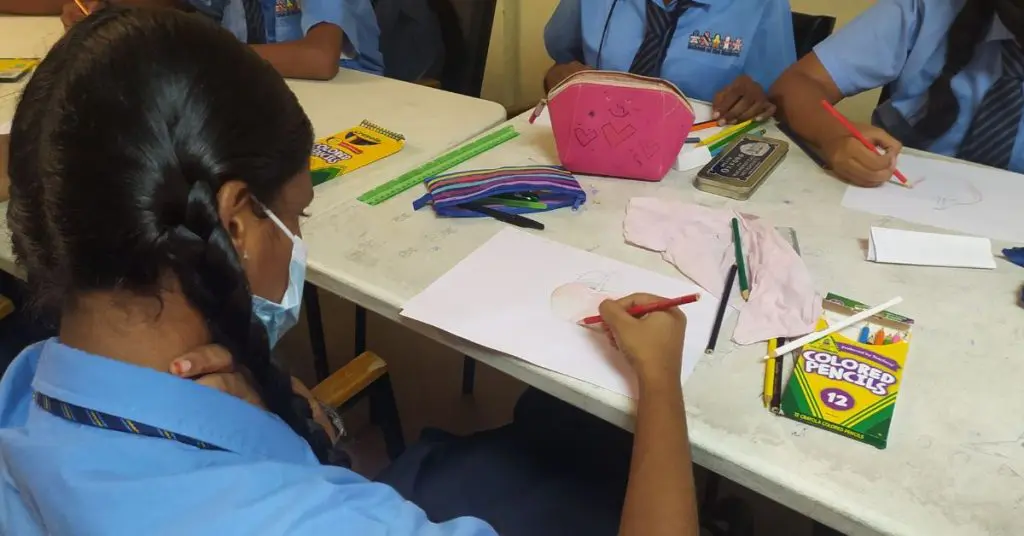
As an art teacher, you have a unique opportunity to unleash your students’ creativity and spark their imagination.
But controlling a classroom full of enthused and inventive students can be a difficult chore.
Do not be alarmed; this article will provide you with 17 useful classroom management techniques that will not only assist you in preserving a constructive and fruitful learning environment but also help you maximize the learning potential of your students.
- Classroom Management Strategies for Art Teachers
- Getting Started With Classroom Management
- The Three Pillars Of Classroom Management
- 1. Building Rapport With Your Students
- 2. Establishing Rules And Consequences
- 3. Implementing Positive Behavior Interventions
- 4. Dealing With Difficult Behaviors
- 5. Creating A Safe And Orderly Environment
- 6. Managing Your Own Stress And Emotions
- 7. Set Clear Expectations
- 8. Develop a Classroom Management Plan
- 9. Keep Them Busy
- 10. Use Positive Reinforcement
- 11. Utilize Technology
- 12. Build Relationships
- 13. Use Non-Verbal Cues
- 14. Engage Parents
- 15. Reflect and Revise
- References:
Affiliate Disclaimer: This post may contain affiliate links, which means I will receive a commission if you make a purchase using these links.
Getting Started With Classroom Management
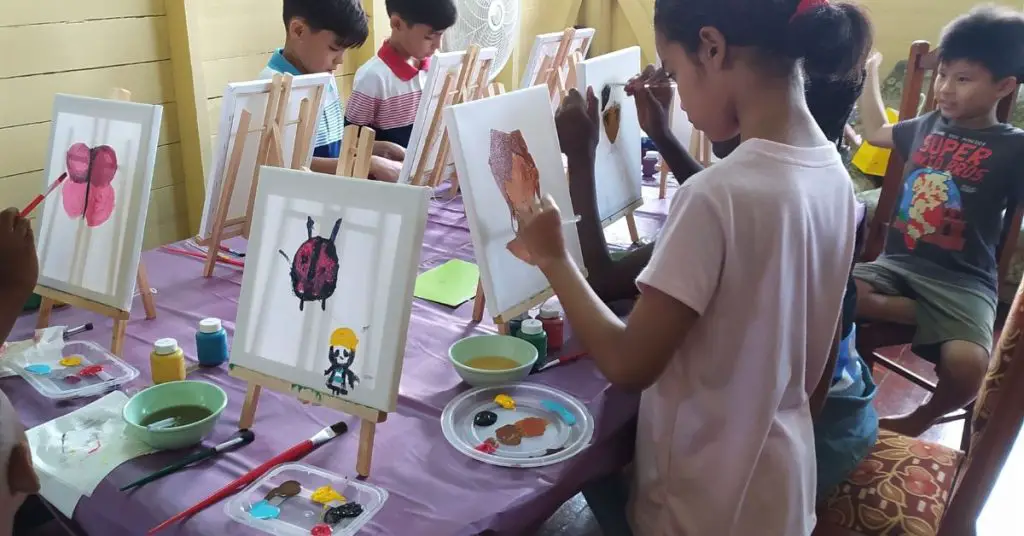
Classroom management is an important part of any teacher’s job. Without a proper plan, it can be difficult to manage your students and keep them on task.
This section will provide you with tips on how to develop a classroom management plan, as well as advice on how to set realistic goals for your students.
Additionally, we will discuss some strategies that work well for art teachers. If you ever find yourself dealing with misbehaviour in class, be sure to read this article for helpful tips.
One of the first steps in developing a classroom management plan is to establish goals for your students.
It’s important to be realistic about what you expect from them, and don’t set too high of standards.
This way, you won’t frustrate your students and they’ll have a better chance of succeeding. Additionally, it’s helpful to develop specific objectives for each student in your class.
This will help you know exactly where they are at in their learning process and give you an idea of how much work needs to be done on certain subjects.
Once you have established goals and objectives for each student, it’s important to create a system that will keep track of their progress.
A good method is to use individualized achievement charts or portfolios. These tools allow you to see exactly how each student is progressing throughout the year, as well as which subjects require more attention than others.
Additionally, setting up effective punishment policies can help maintain discipline in your class. If misbehaviour occurs, be sure to take action immediately by issuing a punishment such as detention or homework assignment failure.
By following these tips, you can successfully manage your classroom without resorting too often to disciplinary measures.
In fact, using positive reinforcement techniques can actually result in increased behaviour within the classroom!
The Three Pillars Of Classroom Management
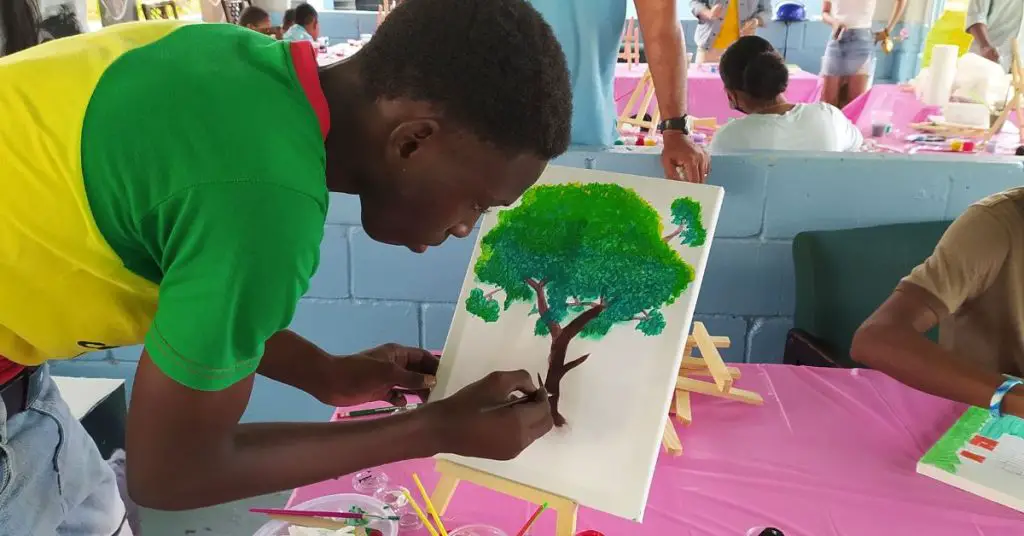
Classroom management is an essential part of creating a successful learning environment in any classroom, including an art classroom.
These are a few key things to keep in mind when it comes to effective classroom management in the art classroom.
- Proactive Planning
The first pillar of classroom management in the art classroom is proactive planning. This means that teachers should think ahead and anticipate potential issues before they arise.
In the context of the art classroom, this might involve planning for materials management, establishing clear rules and procedures for working with art supplies, and communicating expectations to students before they begin working on projects.
By taking a proactive approach, art teachers can help prevent unwanted behaviour and create a more positive and productive learning environment for their students.
- Building Strong Teacher-student Relationships
The second pillar of classroom management is building strong teacher-student relationships.
Teachers who take the time to get to know their students and build positive relationships with them are more likely to be successful in managing their classrooms.
In the art classroom, this might involve showing interest in students’ artwork, providing individual feedback, and creating opportunities for students to collaborate and share their work with each other.
- Ongoing Learning and Growth
The third and final pillar of classroom management in the art classroom is ongoing learning and growth.
Effective classroom management is not a one-time event but an ongoing process that requires teachers to continually reflect on and refine their strategies.
In the art classroom, this might involve seeking out professional development opportunities, reflecting on past successes and challenges, and staying up to date with new techniques and approaches to teaching art.
Effective classroom management in the art classroom is built on three pillars: proactive planning, strong teacher-student relationships, and ongoing learning and growth.
By keeping these principles in mind and continually refining their approach, art teachers can create a positive and productive learning environment for their students.
Let’s look at the 17 strategies in detail.
1. Building Rapport With Your Students
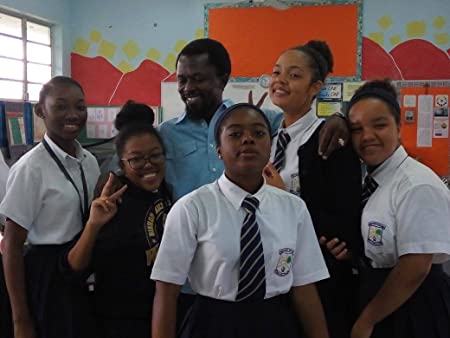
Building rapport with your students is essential for teacher success. It’s critical to determine which method works best for you. Being engaging and interesting, being patient, and being responsive to their needs are some tips for building rapport with your students.
It is of utmost importance to maintain this rapport throughout the semester; if it begins to deteriorate, it will be difficult to restore. Being engaging and interesting is one way to establish rapport with your students.
Another way is a willingness to share your own teaching experiences, being open to feedback, and listening to what they have to say.
It is also critical that you are responsive to their needs. This includes not only understanding what they are asking for, but also providing it as soon as possible.
2. Establishing Rules And Consequences
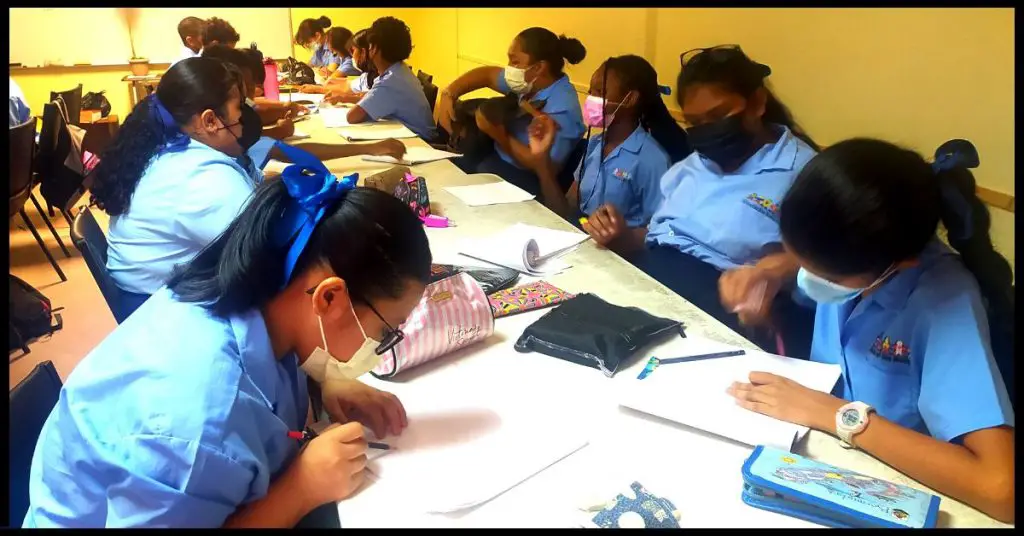
Establishing rules and consequences is crucial for effective classroom management in any subject, including art class.
When introducing class rules and consequences to students, it is important to outline the key points that every student should know and understand by the end of the lesson.
This includes the importance of classroom rules in creating an environment of respect and academic achievement, as well as the role of rules in ensuring that everyone is following the same expectations.
The art teacher can start by jointly developing class rules based on expectations and needs. The teacher can solicit help from students to develop a set of classroom rules and responsibilities.
It is important that the rules are agreed upon and understood by everyone in the class. The teacher can also use simple rules that have been selected before students enter the classroom.
Additionally, it should be understood that when rules are broken, consequences will be applied fairly and consistently. This will help to create a sense of accountability and respect for the rules.
The consequences should be clear and appropriate to the specific situation, such as loss of privilege or additional work.
By establishing clear rules and consequences, the art teacher can create a safe and positive learning environment where all students can thrive.
3. Implementing Positive Behavior Interventions
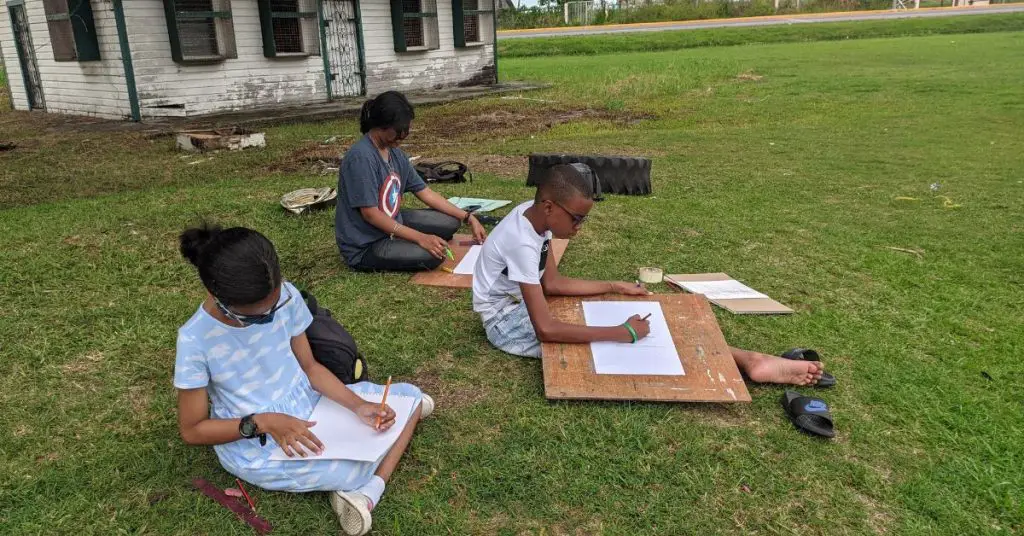
Implementing Positive Behavior Interventions can greatly benefit classroom management in the art class.
It is important to explain the key points that every student should understand, such as the importance of following classroom rules for creating an environment of respect and academic achievement.
Teachers can develop simple rules prior to the start of class or collaborate with students to create the best rules for the class.
These rules should be agreed upon by everyone in the class and it should be clear that consequences will be applied fairly and consistently for any rule-breaking behaviour.
In addition to establishing clear rules and consequences, Positive Behavior Interventions can be used to encourage positive behaviours in the art class.
This may include positive reinforcement, such as praising students for following the rules or exhibiting positive behaviours, or using a token system where students can earn rewards for good behaviour.
Teachers can also use visual cues, such as posters or hand signals, to remind students of expected behaviours and to redirect negative behaviours in a positive manner.
Overall, implementing Positive Behavior Interventions can be an effective way to promote a positive and productive learning environment in the art class.
By establishing clear rules and expectations, providing positive reinforcement, and redirecting negative behaviours in a positive manner, teachers can help students develop the skills and habits needed to succeed both in the art class and beyond.
4. Dealing With Difficult Behaviors
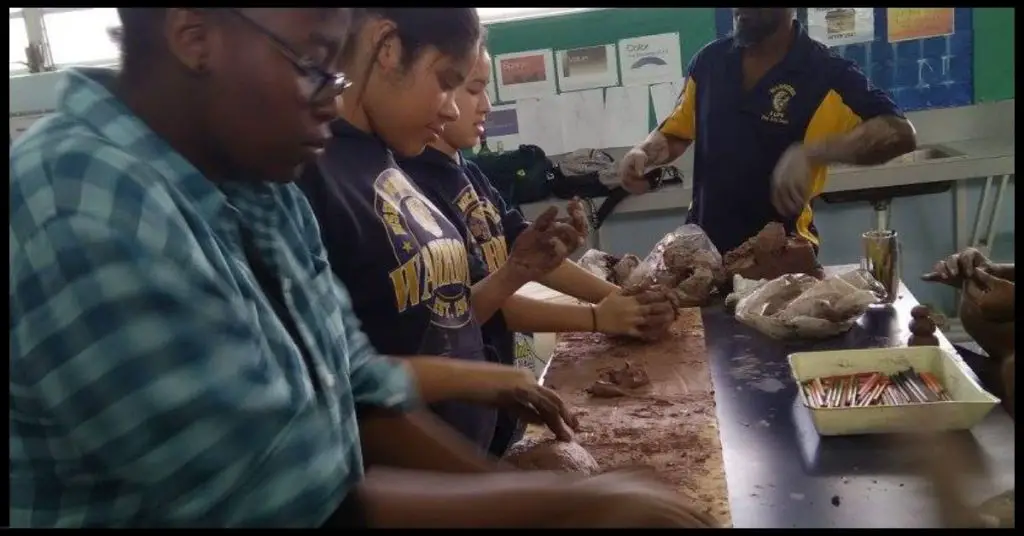
If handled incorrectly, difficult behaviours can lead to disruptions and even damage to the classroom environment.
Dealing with challenging behaviours in art class can be a difficult task for teachers. Effective classroom management strategies, on the other hand, can help to mitigate these issues and foster a positive learning environment.
Some of these strategies include:
- create a comprehensive classroom management action plan that can be put into action right away.
- ignoring minor disruptions;
- addressing disruptive behaviour immediately;
- using a signalled response system;
- creating rules and consequences together with students;
- promoting positive behaviour.
- developing positive relationships with students to aid in the resolution of future conflicts.
- schedule one-on-one meetings with students in order to better understand them and make deposits into the relationship.
- discuss classroom management challenges with colleagues, this provides a forum for sharing difficult experiences and methods that have helped them solve problems.
Each strategy has its own advantages and disadvantages, so it’s important to choose the one that will work best for your particular situation.
One advantage of using a signalled response system is that it allows teachers to respond quickly and effectively to any unacceptable behaviour.
This can help reduce the disruption that occurs when students are not held accountable for their actions.
Another advantage of using a signalled response system is that it helps teachers maintain control over the class environment.
By responding quickly and effectively, teachers can prevent more serious disruptions from occurring.
However, there are also disadvantages to using a signalled response system. For example, it can be difficult to determine which student has committed an act of disruptive behaviour. Additionally, signalling may create tension in the class and lead to further disruptions.
Teachers can effectively manage difficult behaviours in art class and create a positive and engaging learning environment for their students by implementing these strategies.
5. Creating A Safe And Orderly Environment
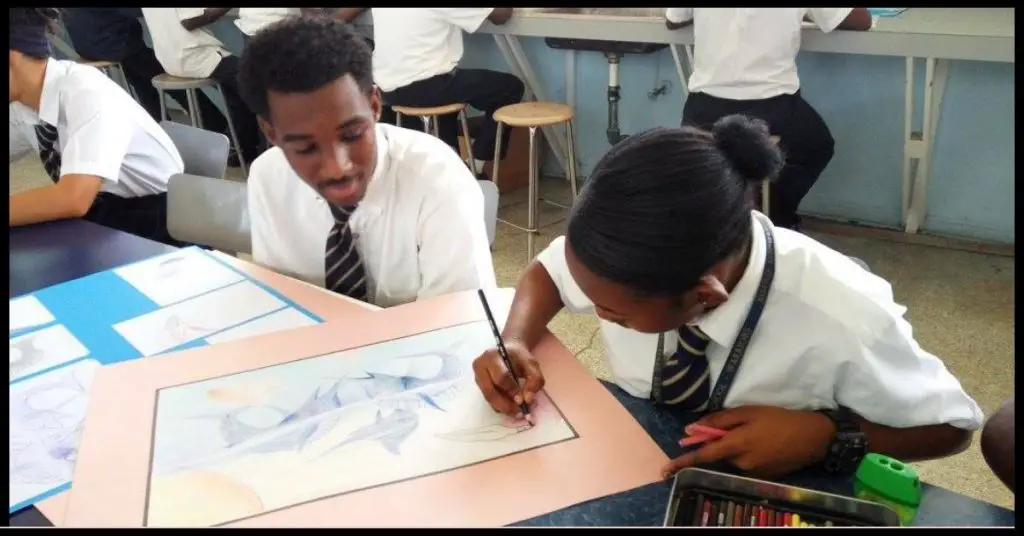
It is important for every school to have a safe and orderly environment. This is especially important for classrooms, as it can help to ensure that children are learning in an effective and efficient manner.
There are many ways to create a safe and orderly classroom environment, and here are some tips:
- Plan engaging lessons to suit the student’s age and stage of development.
- Establish clear boundaries between students and teachers.
- Set clear classroom procedures and expectations.
- Be consistent with how you discipline students across the board.
- Make sure all materials are properly stored and out of reach of students.
- Keep the classroom clean and organized.
- Limit the amount of noise in the room.
- Encourage student cooperation by setting clear rules and expectations.
In order to create a safe and orderly classroom environment, it is important for teachers to establish clear boundaries with their students.
This can be done by ensuring that all materials are properly stored and out of reach, as well as by keeping the classroom clean and organized.
In addition, teachers should limit the amount of noise in the room and encourage student cooperation through clear rules and expectations.
By following these guidelines, teachers can help to ensure that classes run smoothly and that students are able to learn in an effective manner.
6. Managing Your Own Stress And Emotions
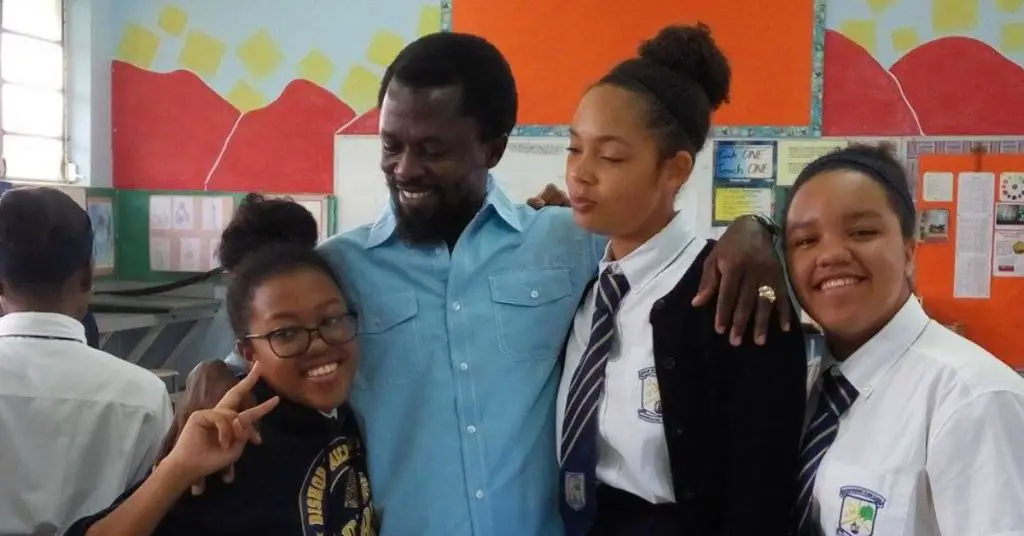
Managing your own stress and emotions is an important part of being successful in the classroom. In fact, it can be argued that managing your own stress and emotions is one of the most important skills you can have.
The following are some tips on how to manage your stress and emotions in the classroom:
- Practice self-care. Make sure to take breaks and engage in activities that bring you joy and relaxation. This can help you manage your own stress and emotions, which can in turn improve how you manage your classroom.
- Have a comprehensive classroom management action plan in place. This will help you stay organized while having a clear plan of action when dealing with unwanted behaviour.
- Schedule one-on-one meetings with students where needed to build positive relationships. This can help you better understand your students and make deposits into the relationship to help ease conflict in the future.
- Make sure you have a plan for when things get tough. Having a plan will help to keep you organized, and it will also help to reduce the amount of stress that you feel.
- Avoid reacting emotionally to difficult situations. Instead, try to take a step back and think about what could be done differently next time. This will help to minimize the negative impact of the situation on both yourself and those around you.
- Take care of yourself both mentally and physically. Both mental health and physical health are essential for success in school, so make sure you’re taking care of both by getting enough sleep, exercise, and nutrition.
By implementing these tips, you will be able to effectively manage your own stress and emotions, which will lead to improved classroom management and a more positive learning environment for your students.
7. Set Clear Expectations
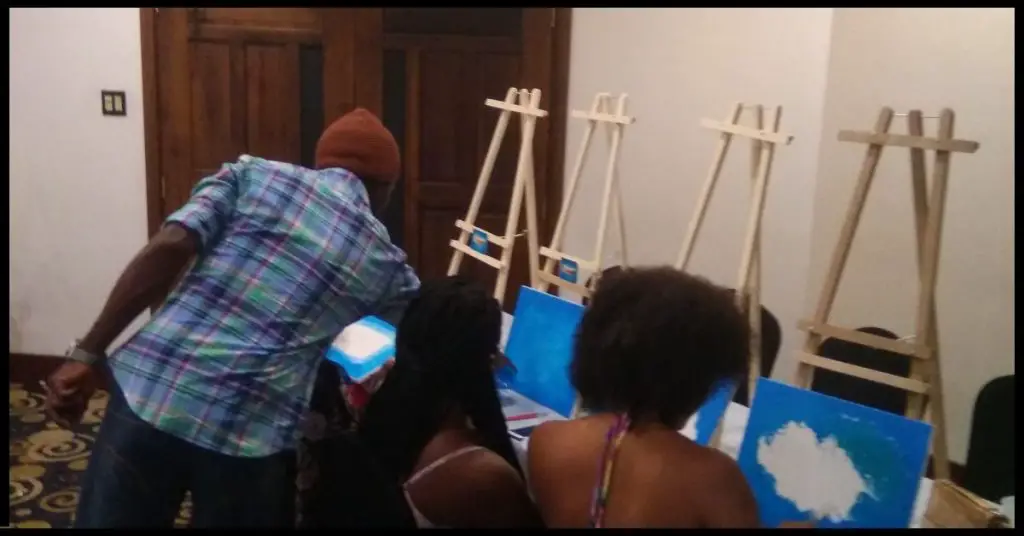
Setting clear expectations for students is essential for effectively managing a classroom in the art room. Here are some helpful hints and strategies:
- Make a list of classroom rules and consequences: Communicate clearly with your students about the expectations you have for their behaviour, participation, and academic performance. Make sure to spell out the consequences of breaking these rules and stick to them.
- Establish positive relationships with your students: Spend time getting to know your students on a personal level and demonstrating that you care about their success. One of my former principals use to always encourage us to go watch and support students at the games. whether is basketball or soccer. You learn a lot about them outside the classroom and it also shows them that you care.
- Positive reinforcement: Use praise, recognition, and other forms of positive reinforcement to reward positive behaviour. This can help reinforce desired behaviour and encourage students to keep up their good work.
- Students should be involved in the process: Give your students a say in the rules and expectations of the classroom, and give them opportunities to contribute to the overall classroom culture. This can help them become more invested in the class and encourage them to take responsibility for their actions.
You can create a positive and productive classroom environment that fosters creativity and growth by setting clear expectations, establishing positive relationships, and involving students in the process.
8. Develop a Classroom Management Plan
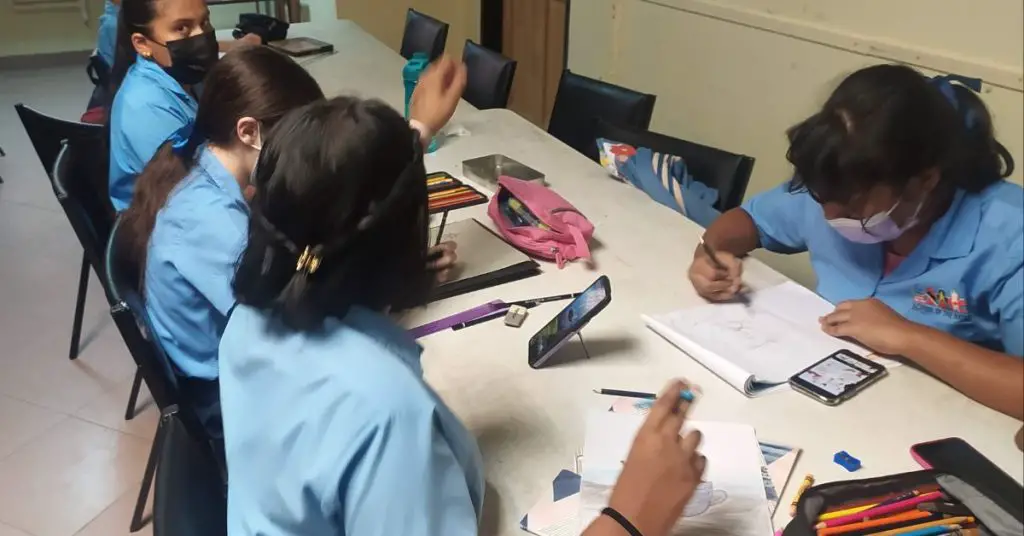
Creating a solid classroom management plan is critical for effective teaching and learning in any subject, including art.
The plan should include strategies for preventing disruptive behaviour, dealing with difficult situations, and building positive relationships with students.
Here are some ideas to help you create an effective art classroom management plan:
- Investing time in your relationship with students can help you avoid future conflicts.
- Use strategies to keep unwanted behaviour in the art room to a minimum. For example, you can eliminate side conversations and repetitive student questions in three simple steps. These strategies can help to create a better environment for teaching and learning.
- Resolve problems as soon as possible and consistently. Follow the school’s policies and procedures for dealing with disruptive behaviour.
- Consider using restorative justice practices, such as peer mediation or circles, to resolve conflicts and foster positive relationships among students.
By following these guidelines, you can develop a classroom management strategy that fosters a positive learning environment and assists your students in reaching their full artistic potential.
9. Keep Them Busy
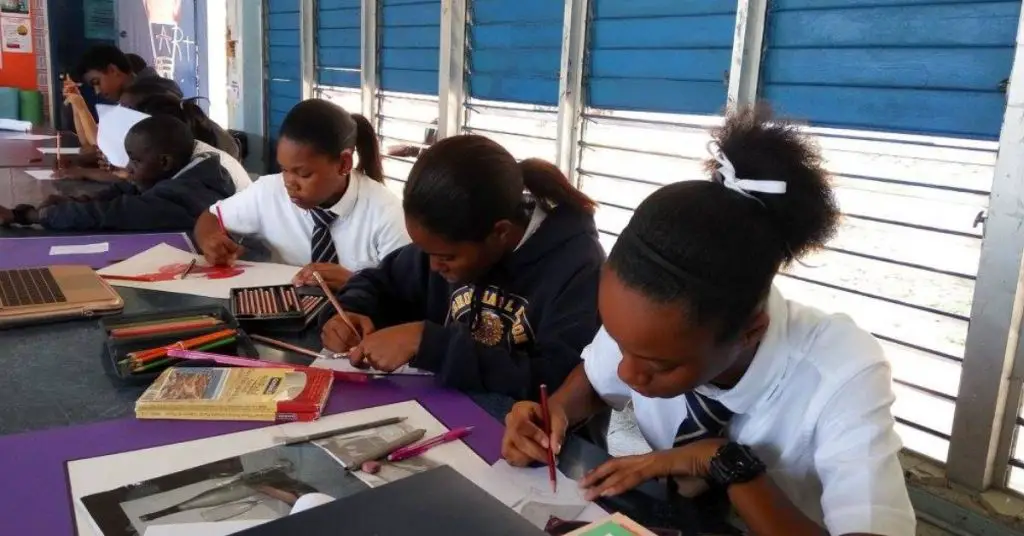
Keeping students busy in art class is an effective classroom management strategy. Students are less likely to be disruptive or disengaged when they are engaged in meaningful activities.
Here are some bullet points on how to keep students busy and effectively manage the art classroom:
- Plan ahead of time and prepare materials to avoid wasting time setting up.
- Provide a variety of art activities to appeal to a wide range of interests and skill levels.
- Set clear expectations for behaviour and routines, and consistently reinforce them.
- Motivate students by using positive reinforcement such as verbal praise, stickers, or a class reward system.
- Allow students to collaborate and work in groups to develop social skills and teamwork.
- Include movement and brain breaks to keep students focused and energized.
- Use technology, such as interactive whiteboards or art-related apps, to improve learning and engagement.
- To avoid boredom or disruptive behaviour, provide extension activities for students who finish early.
- Teachers can create a positive and engaging learning environment in the art classroom by implementing these strategies, which will keep students busy and focused on their artwork.
10. Use Positive Reinforcement
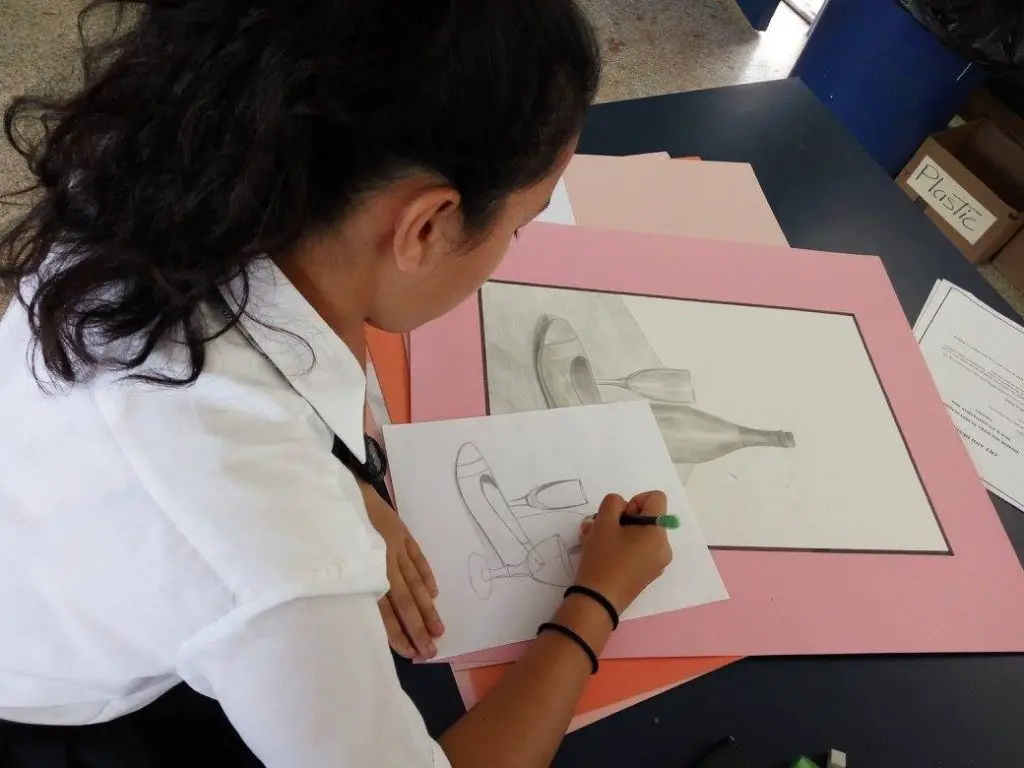
In the art classroom, positive reinforcement is an effective way to manage behaviour. Positive reinforcement can be used by teachers to encourage students to repeat desired behaviours and discourage unwanted behaviours.
Here are some strategies for using positive reinforcement in the art classroom as suggested by successful art educators:
- Praise students for good behaviour: Positive reinforcement can be as simple as complimenting a student on a job well done. Teachers can offer verbal praise, encouragement notes, or small rewards such as stickers or pencils.
- Use a token economy system: A token economy system is a positive reinforcement system in which students earn tokens or points for good behaviour. These tokens can be redeemed for prizes such as additional art time or free art supplies.
- Celebrate successes: Celebrating students’ accomplishments can help motivate them to keep up their good behaviour. Teachers can create a bulletin board or display it to highlight students’ artwork and achievements.
- Giving students options can also be a form of positive reinforcement. Teachers can provide students with options for art projects or materials, which can help them feel empowered and invested in their work.
Positive reinforcement strategies can help students develop good behaviour habits and create a positive teaching-learning environment.
11. Utilize Technology
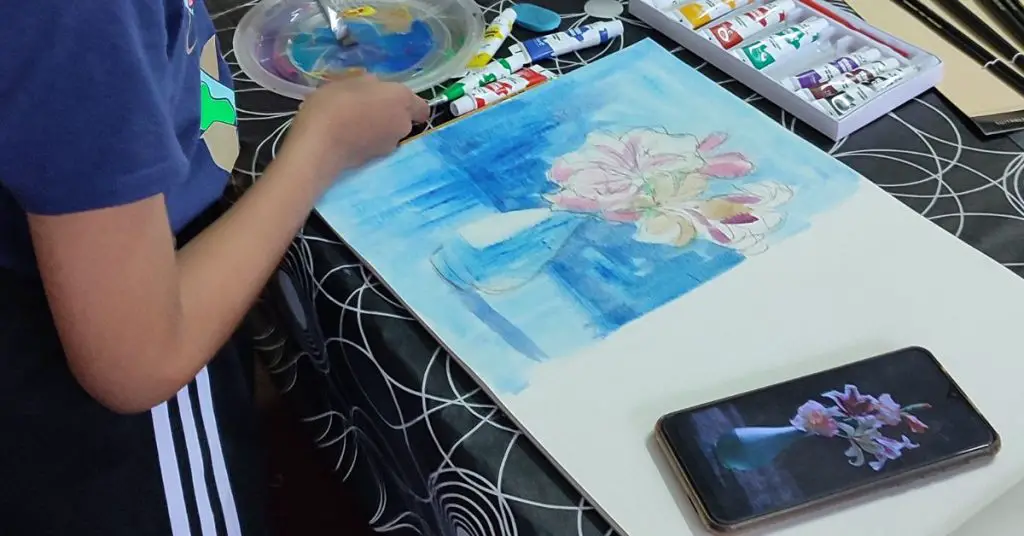
Using technology in the art classroom can help to manage behaviour and increase student engagement. Here are s a few examples of how technology can aid in classroom management in art class:
- Digital portfolios: Digital portfolios can be used by students to showcase their artwork and progress. This can help to keep them engaged and motivated while also providing a platform for teachers to monitor and provide feedback on their work.
- Apps for classroom management: Apps such as ClassDojo and Seesaw are available to assist with classroom management. Teachers can use these apps to monitor student behaviour, provide positive feedback, and communicate with parents.
- Interactive whiteboards: Interactive whiteboards can be used to engage and focus students during the learning process. Teachers can use the whiteboard to display images and videos, and students can interact with the content.
- Online resources: Teachers can supplement their lessons with online resources such as videos, tutorials, and interactive activities to keep students engaged. These resources are available on classroom computers as well as students’ personal devices.
Technology can provide valuable tools to enhance the art classroom experience, whether through digital portfolios, classroom management apps, interactive whiteboards, or online resources.
12. Build Relationships
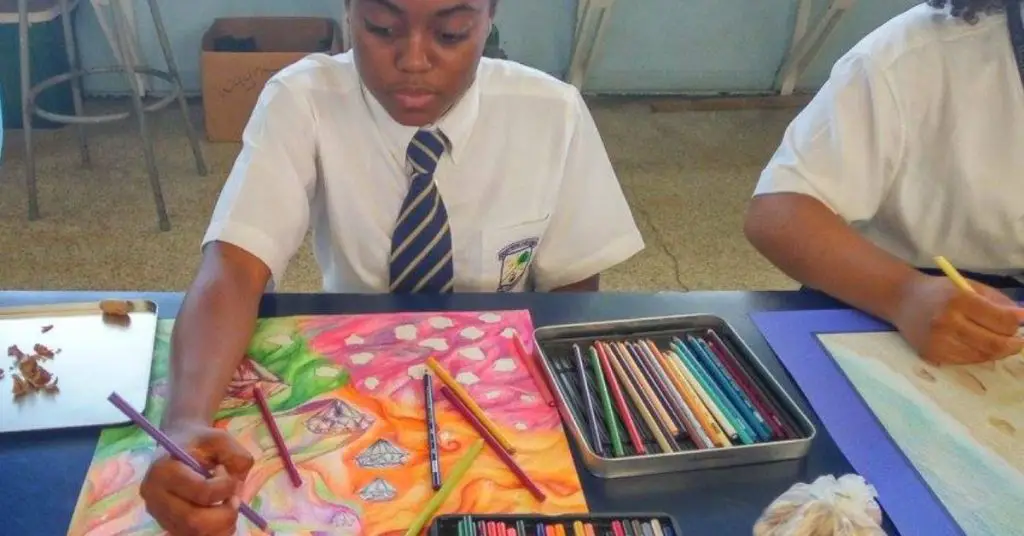
Building positive relationships with students is an effective method of controlling classroom behaviour. Here are some suggestions for developing relationships with students to aid in classroom management:
- Make time to get to know your students as individuals. This will help you better understand your students’ personalities, interests, and learning styles.
- Encourage student-led activities in the classroom to foster a collaborative environment. Giving students opportunities to collaborate can foster teamwork and mutual respect.
- Recognize students’ accomplishments and progress with positive reinforcement. Praise for students’ efforts can boost their self-esteem and motivation to learn.
- In order to make the learning experience more engaging and meaningful for students, incorporate their interests and backgrounds into the curriculum. This can help students feel a sense of belonging and ownership.
With these tips, teachers can create a safe and respectful classroom environment that promotes learning and creativity in art class by developing positive relationships with students.
13. Use Non-Verbal Cues
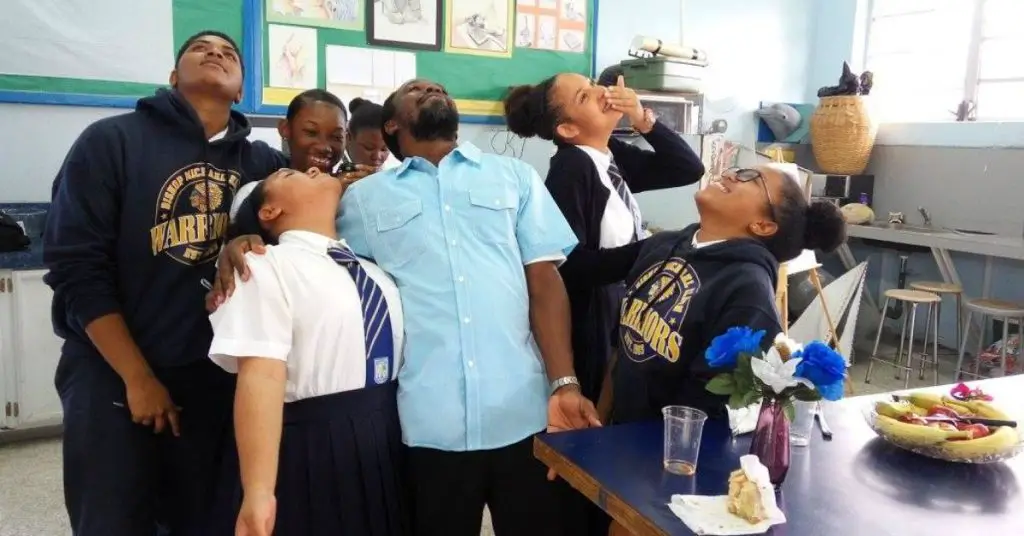
Nonverbal cues can be an effective tool for controlling classroom behaviour in art class.
Teachers can convey expectations and redirect students without interrupting the flow of instruction by using body language and other nonverbal signals.
Here are some pointers on how to effectively use nonverbal cues in the art classroom:
- Make eye contact with students who are off-task: By making eye contact with students who are off-task, teachers can send a message that their behaviour is unacceptable. This is especially effective when combined with a slight head shake or raised eyebrow.
- Use proximity: Moving closer to a misbehaving student can be a subtle way of communicating that their behaviour is unacceptable. Simply standing or walking closer to the student can accomplish this without saying anything.
- Use gestures: Simple hand gestures like pointing or waving can be effective at redirecting student attention or signalling a change in activity.
- Use body language: Teachers can convey authority and set expectations by using their posture and body language. Standing tall and facing the class can indicate that it is time to concentrate on instruction, whereas turning away or sitting down can indicate that it is time for independent work.
Art teachers can maintain a positive and productive learning environment for all students by incorporating nonverbal cues into their classroom management strategies.
14. Engage Parents

Parental support is required for effective classroom management. Engaging parents can aid in the creation of a positive learning environment, the reduction of disruptive behaviour, and the improvement of student outcomes.
Here are some suggestions for engaging parents and improving classroom management in art class:
- Communicate with parents on a regular basis: Effective classroom management requires regular communication with parents. Keep parents up to date on what is going on in the art class by using newsletters, emails, or phone calls. Inform parents about the learning objectives, upcoming projects, and student progress. This will allow parents to stay involved in their child’s education and encourage positive behaviour in the classroom.
- Invite parents to participate: Including parents in the art class can help improve classroom management. Encourage parents to contribute or participate in classroom activities, attend school events, and share their knowledge with students. This will make parents feel more connected to the classroom and the school community, which may result in better student behaviour.
- Create a welcoming and positive atmosphere in the art class in order to encourage parent involvement. Showcase student artwork, share success stories, and recognize accomplishments. Make parents feel welcome and appreciated in the classroom, and they are more likely to support your efforts to manage classroom behaviour.
- Provide the following resources: Give parents resources and tools to help them support their child’s learning and behaviour. Share strategies for managing behaviour at home, provide resources for parents in need of additional assistance and provide suggestions for engaging students in the arts. This will give parents confidence in their ability to support their child’s learning and behaviour both inside and outside of the classroom.
Engaging parents in art classes can be a powerful and often overlooked tool for improving classroom management.
Regular communication, inviting parents to participate, fostering a positive environment, and providing resources are all effective strategies for engaging parents and improving student behaviour.
Teachers and parents can collaborate to create a positive learning environment that promotes student success.
15. Reflect and Revise
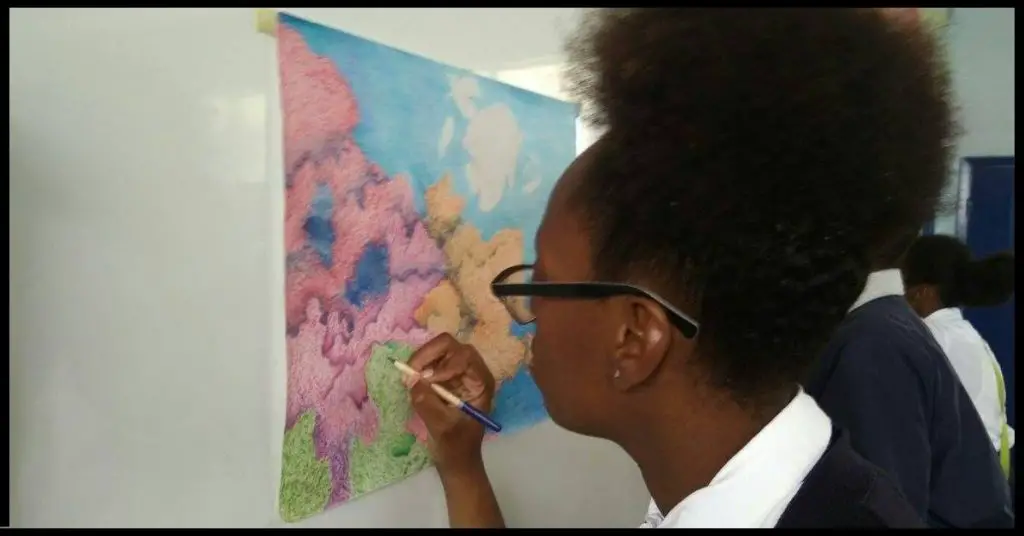
Reflecting on and revising classroom management strategies can help improve the learning environment in an art class. Here are some pointers and strategies to think about:
- Use timers to structure class time and signal task transitions.
- To reinforce desired behaviours, reward students who exhibit positive behaviours.
- Plan one-on-one meetings with students to foster positive relationships and deposit funds into the relationship bank for future feedback and conflict resolution.
- At regular intervals, such as at the end of each semester or school year, consider your classroom management strategies.
- Evaluate the efficacy of current strategies and make necessary changes.
- Seek feedback from students and coworkers to learn what is working well and what could be improved.
- Maintain an open mind when it comes to experimenting with new classroom management strategies and approaches.
- Art teachers can create a more positive and productive learning environment for their students by reflecting on and revising classroom management strategies.
Art teachers can create a more positive and productive learning environment for their students by reflecting on and revising classroom management strategies regularly.
Final thoughts on Classroom Management Strategies for Art Teachers
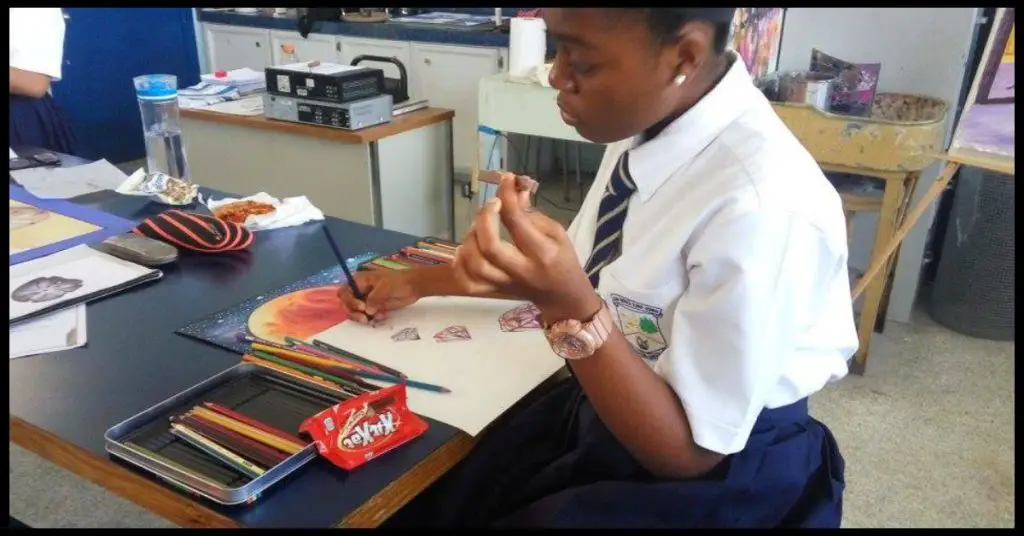
While artwork is central to what we do as art teachers, it is only a means to an end. The true goal of our work is to foster creativity, passion, and self-expression in our students.
But none of that can happen without effective classroom management. By following the 17 tips and strategies outlined in this blog post, you can create a safe and orderly environment where your students can thrive.
So what are you waiting for? Get started today and see the difference effective classroom management can make in your art room!
References:
- Everything you need to know about classroom management in the Art Room. The Art of Education University. (2018, November 12). Retrieved February 20, 2023, from https://theartofeducation.edu/2018/11/09/everything-you-need-to-know-about-classroom-management-in-the-art-room/
- Hurst, A. (2020, January 19). Managing an art classroom. TheVirtualInstructor Blog |. Retrieved February 20, 2023, from https://thevirtualinstructor.com/blog/managing-an-art-classroom
- Strategies to manage behaviour in the art room. The Arty Teacher. (2019, December 23). Retrieved February 20, 2023, from https://theartyteacher.com/strategies-to-manage-behaviour-in-the-art-room/
- Managing the art classroom. Advancement Courses. (n.d.). Retrieved February 20, 2023, from https://www.advancementcourses.com/courses/managing-the-art-classroom/



Leave a Reply